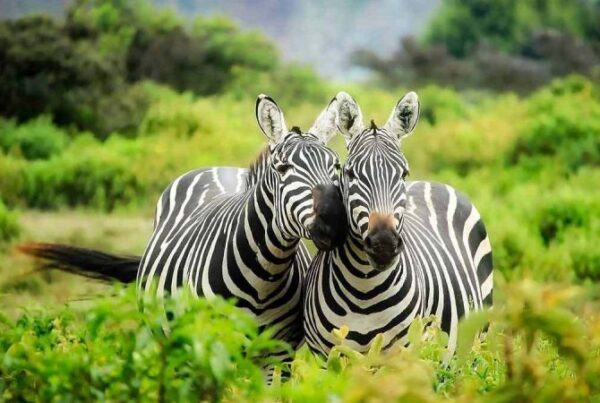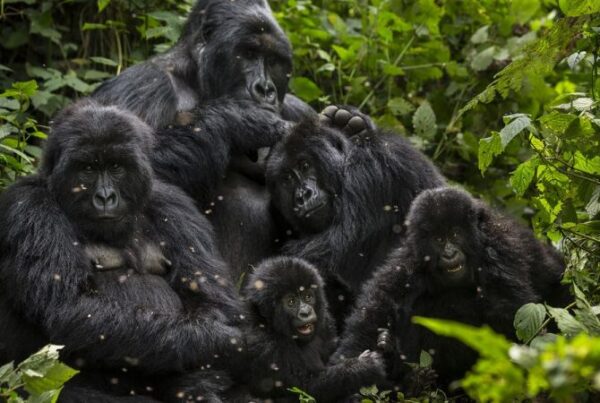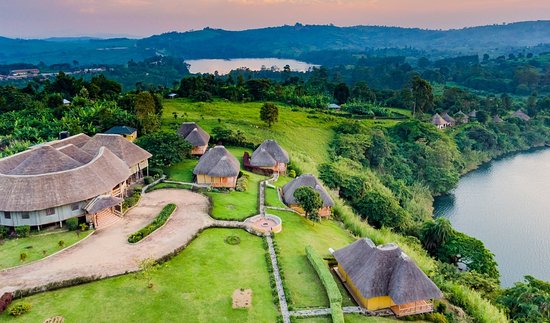5 Fascinating Facts About Brown Hyena
Facts About Brown Hyena
The Ghost of the Desert: An Introduction
Among Africa’s most enigmatic and misunderstood predators, the Brown Hyena (Parahyaena brunnea) emerges as a symbol of survival, adaptability, and mystery. Often overlooked in favor of its more vocal and spotted cousin, the brown hyena carves a quiet, solitary path through the arid landscapes of southern Africa.
Cloaked in a shaggy brown coat, with pointed ears and a powerful build, this elusive carnivore has mastered the art of desert living. Its reputation as a scavenger barely scratches the surface of its complex role in the African ecosystem. To appreciate the depth of this animal’s story is to venture into one of nature’s most refined examples of adaptation.
The brown hyena’s life is a narrative of endurance. Found primarily in Namibia, Botswana, parts of Zimbabwe, and northern South Africa, this species is often seen wandering the fringes of the Kalahari and Namib Deserts. It is in these harsh terrains that the brown hyena thrives, revealing remarkable traits that have fascinated scientists, naturalists, and wildlife enthusiasts alike. From its social structure and feeding habits to its evolutionary lineage and role in cultural lore, the brown hyena offers more than just intrigue—it offers insight into the heart of Africa’s wilderness.
A Unique Appearance and Evolutionary Design
What sets the brown hyena apart visually is its thick, shaggy fur that ranges from dark brown to grey, with distinct cream-colored stripes on its legs and a mane that can stand upright when the animal feels threatened or excited. This rugged coat is more than a stylistic quirk; it serves a crucial purpose in insulating the animal against extreme temperatures, particularly during cold desert nights. With a body built for endurance, the brown hyena is equipped with strong forequarters, a sloped back, and robust jaws capable of crushing bone.
The species’ evolutionary lineage is equally fascinating. Belonging to the Hyaenidae family, the brown hyena is one of four existing hyena species. Despite their dog-like appearance, hyenas are more closely related to cats and mongooses. The brown hyena in particular is genetically distinct enough to warrant its own genus, Parahyaena, highlighting its unique evolutionary path. This ancient predator has adapted to survive in some of the driest regions of Africa, often walking over 30 kilometers a night in search of food. Its powerful olfactory senses and keen navigation skills allow it to locate carrion with remarkable efficiency.
Masters of Scavenging and Opportunistic Feeding
Perhaps the most well-known aspect of the brown hyena is its role as a scavenger. But what is often misunderstood is just how complex and vital this role is. The brown hyena plays an essential part in the ecosystem by cleaning up carcasses that would otherwise attract disease and other problems. Its diet is highly varied and opportunistic. While carrion makes up the bulk of its intake, it will also consume insects, fruits, eggs, small vertebrates, and occasionally even hunt live prey when circumstances permit.
The hyena’s digestive system is specially designed to extract maximum nutrients from the remains of other animals. It can digest bones, skin, and hooves with ease, ensuring little goes to waste. Its strong sense of smell allows it to detect dead animals from long distances, often beating larger predators to a fresh carcass. This scavenging ability makes it an unsung hero of the savanna, contributing to a balanced and healthy environment.
Interestingly, brown hyenas often cache food in secret locations, burying or hiding parts of a carcass to consume later. This behavior indicates not only a strategic mind but also an ability to plan and secure resources in a competitive environment. In many cases, these hidden caches can support a clan for several days, especially in resource-scarce regions.
Complex Social Structures and Communication (Facts About Brown Hyena)
While brown hyenas are largely solitary in their search for food, they are by no means asocial. They live in small clans that typically consist of an extended family group, often centered around a communal den. These clans can include up to 14 individuals, although most contain fewer members. What makes the brown hyena’s social life particularly intriguing is the balance it maintains between solitude and clan loyalty.
Clan members communicate through a complex array of vocalizations, scent markings, and body language. Scent marking is particularly important; each hyena possesses large anal glands that secrete a pungent paste used to mark territorial boundaries. These markers act as a social network, providing information about individual identity, reproductive status, and territorial claims. The famous “paste-marking” behaviors often occur near den sites and along the clan’s borders.
Mating behavior among brown hyenas is less hierarchical than that of spotted hyenas. Females typically give birth to one to four cubs in hidden dens, where they raise them for over a year before the young become fully independent. The den becomes a hub for social bonding, grooming, and protection, reinforcing the clan’s cohesion.
Stealthy Survivors Facing Conservation Challenges
Despite their resilience, brown hyenas face an increasing number of threats. Their population is currently listed as “Near Threatened” by the IUCN, primarily due to habitat loss, persecution, and poisoning. In agricultural regions, they are often mistakenly blamed for livestock predation and are targeted in retaliatory killings. Yet evidence suggests they rarely attack healthy livestock, instead scavenging from natural deaths or carcasses left unattended.
In some cultures, brown hyenas are associated with negative superstitions, being seen as omens or harbingers of misfortune. This perception has contributed to their mistreatment and a lack of legal protection in certain regions. Conservation organizations are working to shift this narrative by educating local communities on the ecological importance of hyenas and implementing community-based conservation strategies that align the needs of wildlife with human livelihoods.
Ecotourism also plays a pivotal role in brown hyena conservation. By showcasing these remarkable animals in their natural environments, safari operators and wildlife reserves generate both awareness and economic incentives to preserve their habitats. With continued research, education, and sustainable tourism, the brown hyena’s future can be secured.
Encounter the Enigmatic Brown Hyena with WildHorn Africa
There is no substitute for witnessing a brown hyena in the wild. Its ghost-like form gliding across the desert under a moonlit sky is a scene etched in memory. Observing its silent gait, deciphering its trail, and learning its behaviors from experienced guides enriches one’s understanding of Africa’s complex wildlife tapestry.
WildHorn Africa offers expertly curated safari experiences across the continent, including regions where the brown hyena can be found in its natural splendor. With a commitment to ethical tourism, conservation, and storytelling, WildHorn Africa turns every journey into an opportunity for learning and wonder. Join their guided expeditions to connect with wildlife in its purest form, contribute to vital conservation efforts, and witness the survival saga of the remarkable brown hyena.
Book your unforgettable African adventure with WildHorn Africa and let the mysterious beauty of the brown hyena deepen your appreciation for the wild heart of the continent.
Facts About Brown Hyena #Facts About Brown Hyena Facts About Brown Hyena





 WildHorn Africa – Authentic and unforgettable tours across Africa, guided by local experts who know the land, wildlife, and culture best.
WildHorn Africa – Authentic and unforgettable tours across Africa, guided by local experts who know the land, wildlife, and culture best.


